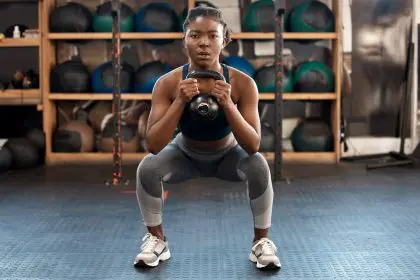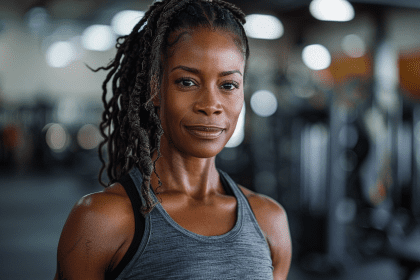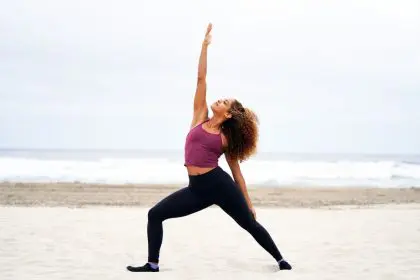Functional fitness has emerged as a game-changer in the fitness world, shifting the focus from traditional exercise routines to practical movements that mirror daily life. Unlike conventional workouts designed solely for aesthetics or muscle isolation, functional fitness prioritizes movements that enhance overall physical function and support everyday activities. By incorporating exercises that simulate real-world tasks, this approach provides numerous benefits, from improving mobility to increasing overall strength.
Scientific foundations of functional fitness
At the core of functional fitness is a biomechanical approach that emphasizes exercises mimicking daily movements. This technique develops strength, flexibility, and coordination, ensuring that gains translate directly to real-life applications. The scientific foundation rests on creating muscle memory and reinforcing neural pathways that improve physical performance. The beauty of functional fitness lies in its focus on natural, multi-joint movements, which not only enhance strength but also improve coordination and balance—skills that are vital for carrying out everyday tasks efficiently.
Comprehensive health benefits
Functional fitness offers a multitude of health benefits that go far beyond basic strength training. By targeting a range of muscle groups simultaneously, these exercises improve mobility, joint stability, and cardiovascular health. Regular engagement in functional fitness activities helps enhance range of motion, supporting the body’s ability to perform routine movements with ease. Moreover, because the exercises replicate real-life motions, practitioners experience less muscle fatigue, better stamina, and fewer injuries compared to traditional workout routines. The holistic approach ensures that all aspects of physical fitness—strength, endurance, flexibility, and coordination—are developed together, providing a comprehensive fitness regimen.
Progressive training methodology
Functional fitness is based on a progressive training methodology, which means that practitioners start with simple, foundational movements and gradually progress to more complex exercises. This structured approach helps develop proper form and technique, ensuring that each exercise is done correctly to prevent injury. As fitness levels improve, individuals are introduced to more challenging movements that demand greater strength, coordination, and balance. This progression enables individuals to steadily build their functional capacity and maximize the benefits of their training. Whether lifting groceries, climbing stairs, or lifting heavy objects, functional fitness prepares the body to handle these tasks with greater ease and safety.
Mastering essential movement patterns
The cornerstone of functional fitness is mastering fundamental movement patterns that directly relate to daily activities. These movements include:
- Squatting movements: Essential for lower body strength and mobility, squats build the foundation for bending, lifting, and standing up from a seated position.
- Pushing and pulling patterns: Crucial for upper body strength, these movements simulate activities like opening doors, lifting boxes, or pushing a stroller.
- Rotational exercises: These target the core, helping to build stability and power, which is vital for twisting motions such as turning to reach something or swinging a bat.
- Locomotion drills: Agility and coordination are developed through exercises that mimic walking, running, or climbing, ensuring better balance and flexibility.
- Balance training: Crucial for proprioception, balance exercises improve stability, preventing falls and aiding in activities that require body control.
Mastering these essential patterns improves performance in both structured workouts and daily routines, making functional fitness a sustainable and practical solution to long-term health and fitness.
Integrating functional fitness into daily routines
The true value of functional fitness lies in its ability to seamlessly integrate into daily life. Unlike traditional workouts that require isolated training sessions, the principles of functional fitness become a part of the way the body moves throughout the day. For example, after incorporating squats and lunges into a workout, individuals may find themselves moving more freely while carrying groceries or picking up their children. The purpose of functional fitness is not just to enhance one’s performance during exercise, but to improve daily function by making every movement more efficient and effective. Over time, this results in better posture, reduced injury risk, and improved overall quality of life.
Specialization and advanced applications
For those who have mastered basic functional movements, there are opportunities for specialization. Functional fitness principles can be adapted to meet specific goals, whether that involves enhancing athletic performance, improving mobility in older adults, or supporting rehabilitation efforts after an injury. This adaptability makes functional fitness a versatile approach that benefits individuals of all ages and fitness levels. Whether you are training for a marathon, recovering from surgery, or simply looking to increase your ability to do everyday tasks, functional fitness can be customized to meet your needs.
Conclusion
The evolution of fitness science continues to validate the effectiveness of functional fitness. As research increasingly shows the benefits of focusing on natural movement patterns, functional fitness stands out as a practical, sustainable approach to overall health. Whether you are seeking improved performance, injury prevention, or enhanced mobility, functional fitness provides a comprehensive and adaptable framework for achieving your goals. By integrating these essential movements into daily routines, individuals can improve not only their fitness levels but also their quality of life, making functional fitness a long-term solution for optimal health and well-being. As the fitness landscape evolves, functional fitness remains at the forefront of innovation, offering practical benefits for individuals looking to improve their physical capabilities and maintain long-term health.















